BAE Systems will partner with Cammell Laird for their Type 31e Frigate bid, who will build the vessels at their Merseyside facility while the Clyde will focus on the Type 26 Frigates.
While the Clyde will still be working on 13 vessels, 5 of them are Offshore Patrol vessels and 8 are Type 26 Frigates. The Type 31 Frigates were originally promised to the Clyde.
In November last year, after confirming that the Type 26 Frigate would be built on the Clyde, Michael Fallon also indicated that the Type 31 Frigate will likely be assembled there too. Fallon told BBC Radio Scotland:
“Nobody is shortchanging the Clyde. This is a huge moment for the Clyde; we’re confirming we’re going ahead with the steel cut next summer, earlier than expected. The first eight will be the Type 26 combat ships.
After that, the Clyde will be building a lighter frigate and we will end up with a fleet that is larger than the fleet at the moment.”
Should their bid be successful, BAE Systems will partner with Cammell Laird, who will build and assemble the vessels. This enables BAE Systems, the company say, to appropriately support the National Shipbuilding Strategy whilst ensuring the delivery of the five Offshore Patrol Vessels and the City class Type 26 frigates, ‘to time, budget and to the highest quality standards’.
Duncan McPhee, a steward with shipbuilding union Unite at BAE systems said:
“We are not happy, these are ships we would have expected to be built on the Clyde. As far as we are concerned they should have been part of the 13 ship package we were clearly promised.
We were told then we would have the order for 13 frigates. Now we are down to eight and the five cut-price frigates, which will not be built here.
The Government has come out with a bizarre national shipbuilding strategy, trying to create internal competition in a replication of failed policies of the 1980s.
This will put at risk the ability of the Clyde yard to be a centre for complex naval shipbuilding.”
Another shipbuilders union GMB earlier accused the Government of reneging on guarantees to build the Type 31 Frigates on the Clyde.
Mr Cook of the union GMB told the BBC’s Good Morning Scotland programme:
“These five frigates which Fallon is talking about today were promised to the Clyde as part of the massive cuts. In return, we would have had a state-of-the-art frigate factory to be able to produce the ships at the price that the MoD wished to pay, and we could attract foreign orders.”
Cook also said that there was “no frigate factory, and now no five ships” and that “there has definitely been a reneging – there has been a betrayal on the 13 frigates on the Upper Clyde”.
“Let’s be clear that the Type 31 contracts were originally promised to the Upper Clyde, so while shipbuilding communities across the UK would benefit from a work-share programme of the Type 31 work, this will be at the expense of the Upper Clyde despite its own future already being secured until the 2030s.”
We spoke to a source intimately involved with shipbuilding in Glasgow regarding the practicality of building the Type 31 on the Clyde and he told us:
“I think it’s the obvious answer from an industrial point of view but the question is capacity.
There isn’t any at Govan while T26 is in build.”
Sir Michael Fallon said the first of the new ships are due to be in service by 2023 and shipyards would be encouraged to ensure the vessel was competitive on the global market by working with “global partners”.
Iain Stevenson, Managing Director, BAE Systems Naval Ships, commented:
“Type 31e is an exciting and important programme. Our expertise in warship design and engineering, combat management systems and export campaigns means we are in a great position to contribute to the success of this programme.
We are pleased to be working with Cammell Laird with whom we have a strong and effective relationship, having worked with them on the Carrier and Astute programmes.”
John Syvret CBE, Cammell Laird CEO, added:
“Cammell Laird has very much welcomed the National Shipbuilding Strategy and the Type 31e competition. We will offer a UK warship design, a UK combat system, a UK build and a supply chain with high UK content.
We will be working with BAE Systems and A&P to deliver certainty, speed and agility on this nationally important project. Cammell Laird is proud to be responding as a Prime Contractor for Type 31e.”
Why has this happened?
The MoD is hoping to reduce its reliance on BAE and cut the costs of procurement by spreading shipbuilding across civil and naval yards.
To this end, the government are implementing the results of an independent report into the National Shipbuilding Strategy by Sir John Parker which recommended that the Type 31 Frigate build be spread across the UK, with blocks and components being constructed in yards in both Scotland and England.
The National Shipbuilding Strategy is intended to be a “radical, fundamental re-appraisal of how we undertake the shipbuilding enterprise in the UK, intending to place UK naval shipbuilding on a sustainable long term footing”.
BAE themselves signalled their own reluctance to bid for the Type 31 Frigate as prime contractor due to concerns of a “race to the bottom” on price.
Speaking to The Herald here, BAE managing director Iain Stevenson said:
“We do want to be involved in Type 31. But we have questions. Does it have a budget? What are the timescales. We have not got solid facts. Type 31 could be a race to the bottom.
If it is a front price contract people might bid for it to win and it and it might put them out of business. We would not, because we are BAE Systems.”
In a press release BAE say:
“In response to the Ministry of Defence’s (MOD) evolving requirements as outlined in the National Shipbuilding Strategy, BAE Systems will bring together its warship design and engineering capability and combat systems expertise with Cammell Laird, the commercial shipbuilder, in a Teaming Agreement to bid for the manufacture of the Type 31e, an adaptable general purpose frigate.
BAE Systems is focused on the manufacture and delivery of the two QE Class carriers, the five River Class Offshore Patrol Vessels (OPV) and the first three City class Type 26 warships, as well as continuing to develop and upgrade combat management systems on all Royal Navy ships. Taking account our current and future workload, including Type 26, our shipbuilding capacity on the Clyde will be full until the mid 2030s.”
Sir John’s aforementioned independent report to inform the recent National Shipbuilding Strategy recommended:
“There is no precedent for building two ‘first of class’ RN frigates in one location in the UK. Type 26 is a critical project for the RN and the Nation. Type 31e is urgently required to maintain RN frigate fleet numbers and to establish a UK exportable light frigate. Against this background risks need to be assessed and evaluated in a responsible way by all stakeholders.
A separate lead shipyard or alliance appears to be the best way forward for Type 31e to minimise overall risk. Regardless of choice, BAES would remain in a position to compete for Type 31e work on combat systems, design support and in block build if capacity is available.”
This recommendation has been met.


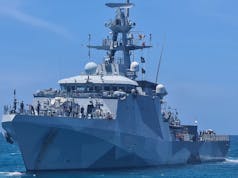
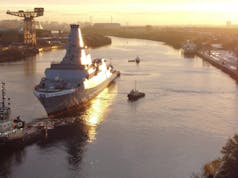
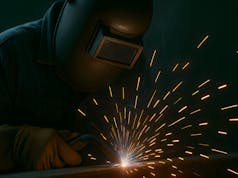
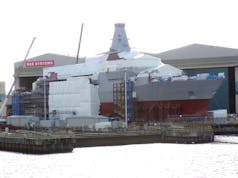




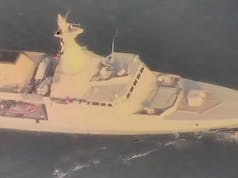

Promises made, and promises broken, at least as far as the Clyde workers are concerned.
If it brings Scottish independence one step closer it’s worth having to listen to the unions and politicians whine about ships the Clyde don’t even have the spare capacity to build.
It makes good sense to spread your manufacturing capability around the country. If Scotland gets its independence then it will make for an easy transition to move all work outside of Scotland.
I agree, I don’t understand the strategy of centering all naval shipbuilding in one zone when that work, could and can, be spread to enhance the nationwide excellence.
Hi Rover10, In an era of limited orders, I would argue that economics drive industry towards focusing on key sites. A reasonably long production run allows investment in skills and new plant.
For instance: submarine construction is centred at Barrow-in-Furness, combat aircraft production in Warton, major civil-airline manufacturing at Bristol, steel production in South Wales.
The situation on the River Clyde is hardly unique.
The Scots, as expressed by the SNP, want everything, think they are owed it, and when they don’t get it scream it is discrimination. There is not an unlimited pot of gold. Liverpool, Belfast, Newcastle, Appledore, all have people and families to support.
BAE can’t complain they have had all warship orders given to them ,whilst other yards get nothing
They’re getting nearly every ship built for thr Royal navy, but scream and throw their toys out the pram when they can’t get five more. It’s not even the goverment saying this, but apparently they’ve been ‘betrayed’. It’s just pathetic.
I think you’re missing the point. I’m sure there are other workers in other shipyards and other industries that have also been promised things and had those promises broken, but regardless of that, for the Clyde, promises were made and broken for the Clyde workers.
The Clyde has got 13 warships 5 OPV’s and 8 Type 26’s.
Bit of a selfish attitude from the unions and the SNP to expect everything to be given to them on a plate.
No betrayal except for the people of Portsmouth and the Tyne who had work stolen from them to help Scottish yards.
Bit !
Usual and fully anticipated response from the Clyde, SNP, Sturgeon etc.
What a load of bull.
Does not even justify a detailed response, just not worth it. Sorry Dadsarny i love a good debate but cannot be arsed on this issue.
BAe should not have stopped ship building in Portsmouth and others in the first place. The selfish Scots ant the lot and have no concern for the National strategy. They have shed loads of work and it’s about time other yards down south got a look in, especially if foreign orders materialise. Anyway, just to put the cat amongst the pigeons, has not the build quality proved to be higher down south, I’ll put that one out to those who serve on them?
As I understand it the navy has more ships inoperable than in service. Maybe getting them as cheap as possible isn’t such a bargain. No matter where you build them, cheap is as cheap does
Hi Howard, With respect, comments like these make me weep.
It’s not a question of “selfish Scots”; ship-building is a precarious business – and the Clyde yards have teetered on the brink of collapse on several occasions in my lifetime.
Incidentally, as a Glaswegian, I personally know some of the “selfish Scots” working in the Govan yard – and if you did too, you would find a group of unionists, proud of their association with the Royal Navy. (Incidentally, I see no one is taking up your issue of poor build quality).
Lets simply think of these folks as hardworking UK industrial workers, trying to make their government keep to its promises, and keen to secure the long-term future of their yard.
Anything else just plays into the hands of uber-nationalists – Scots and English!
They were ‘promised’ this work, but the contract for the 31e has not been awarded yet; it looks like the unions etc shouting now to pressure the government. The Clyde has almost 20 years worth of orders (I work for myself – would love a full 20 year order book!) and who knows what else will follow after that? I think a bit of competition elsewhere in the UK is no bad thing. As Dan says above, it would offer some contingency for RN shipbuilding should Scotland vote for independence in the next ten years or so.
They have work until the 2030’s?
What about the rest of the nation – THEIR nation. The United Kingdom?
No one seems to give a monkeys for the Royal Navy, their only concern is how much they can get?
Saddens me so much, being part Scots myself, that so many do not seem to identify themselves as British, and be proud of that fact, along with their English and Welsh and Northern Irish brothers.
Pride doesn’t put food on the table, Daniele.
But an order book into the 2030s does, so what’s their beef?
So far the order book is only for 5 OPVs with 1 already launched, and 3 Type 26. Yes, it’s common practice to put it in batches, but the other 5 are not going to be neogiated until 2020, so the order book itself stretches only to about 2023 plus 2 or 3 years, not into the 2030s – that’s promises so far,
As I said elesewhere, promises have been broken in the past including “13 Type 26” to be built on the Clyde according to Fallon in Decemeber 2014, and to other shipyards across the UK before that.
Three ships actually ordered and contracted. The rest dependent on the cost of those ones. Or not making waves if you’ll pardon the pun.
You expect shipbuilders to be grateful for having a gun pointed at their head.
Work till 2030 is not confirmed. Merely “promised”
Aye, right.
Just thought I’d drop this in here:
https://ukdefencejournal.org.uk/where-will-type-31-frigate-built/
Only three ships contracted. The rest depend on the cost of those. Potentially just three frigates of those promised.
The forelock tuggers will still be happy
We should be building 2.5 major surface ships per annum and 0.5 Subs EVERY SINGLE YEAR. What those ships are is open for some debate, but the facts are indisputable the RN/RFA has a fleet size of 75-90 major surface ships of different forms and these all need replacing over their lifespan. Surely this is enough for everyone.
Clyde – T26 (and the T45 replacement) 13 ships over 25 years
Barrow – Submarines (14 over 25 years – including an increase of SSN’s to 10)
Cammel Laird – Support and RFA (25 ships over 25 years)
Babcock/AP – T31 – 25 over 25 years (or combination of T31 and MHVC if that is the decision)
Devonport – Small ships and systems factory 12-16 p.a. (CB90’s. Safeboats Mk6, Atlas, Rhibs etc)
This would meet the NSS albeit over a 25 year alignment (to match the nuclear reactor and CVF lifespans of 25 and 50 years) and cost £2.5bn p.a. to achieve in todays money.
Subs – £1bn pa
T26 – £0.5bn pa
T31 -£0.4bn pa
Support – 0.4bn pa
Small vessels – £0.2bn pa
I think this is remarkable value for the UK if done properly and actually resolve many of the MOD’s boom and bust policies.
We have a requirement for this – I am not making it up 3 ships per annum, plus a sub every other year, plus 12-16 smaller vessels and unmanned systems (under 30m). Would ensure consistency of drumbeat, stable allocation of funding and most importantly new kit coming into service every single year, which will keep morale high and the fleet relevant.
Designs can be tweaked and update in 5 year blocks, with a huge drive to standardise on engines and common components throughout.
I’d have thought that that would be true. There has been such a dependence on the Clyde that they could afford to reduce their standards compared to other yards that must maintain high standards to get a look in, just like BAe. This is just speculation but it makes sense.
Apologies, that was a reply to Howard Newman.
You have to remember thar the Clyde have just built the two biggest warships in the Royal Navy’s hostory . They have promises of other builds ie.the type 26 and the new patrol boats. It does make sence that the 26 and 31 be built at the same time and using other shipyards .Its right that other shipbuilding comunities have some of the benefits.
I’m an ex navy man and want to see the fleet grow to safe proportions , not to hear the pathetic arguing from north of the border.
The only way these ships wouldn’t be built in Scotland is if Scotland was independent and didn’t have the national resources of the Royal Navy.”